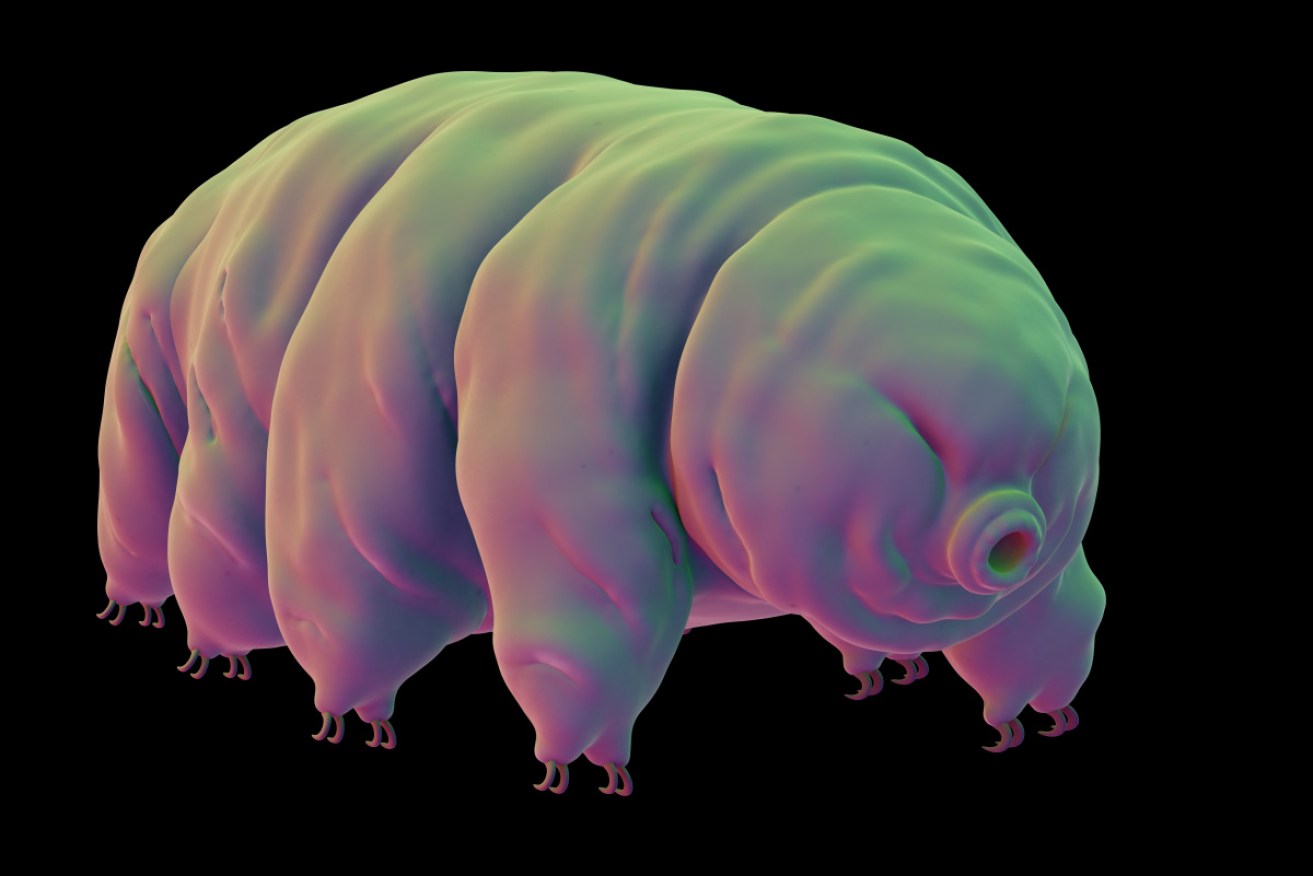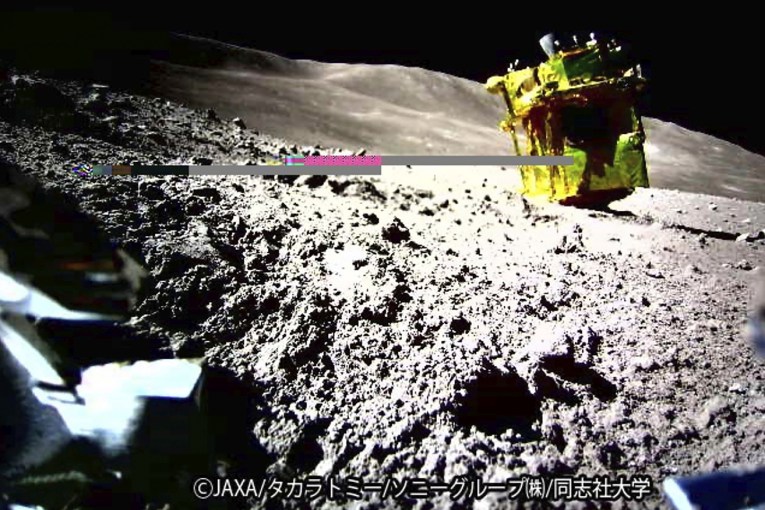Moon bugs: Crashed spacecraft accidentally spills life on lunar surface


Tardigrades are now sleeping on the moon. Just add water and they will come back to life. Photo: Getty
The Moon has been seeded with tiny, spooky-looking life, following the crash of an Israeli spacecraft in April.
Tens thousand tardigrades – tiny sphincter-faced creatures, also known as water bears – were aboard the privately-funded Beresheet robotic moon lander when it lost control and crashed on the lunar surface on April 11.
The tardigrades, each less than a millimetre long, were in a state of suspended animation during their spaceflight.
Instead of sleeping in pods like the astronauts in 2001: A Space Odyssey, some of them were set in artificial amber, and others were stuck on tape.
The scientist who included tardigrades in Beresheet’s payload reportedly believes they are “most definitely still alive”.
“Tardigrade is one of the, if not the, most durable forms of life that we know of. They’re ancient, multicellular, nearly indestructible, microscopic organisms that have survived all five mass extinctions on Earth,” Nova Spivack told Canadian broadcaster CBC.

This is what tardigrades look like when in suspended animation and they have lost all their water. They can survive just about any calamity. Photo: Getty
“And now there are some of them on the Moon.”
Mr Spivack is the founder and CEO of the Arch Mission Foundation, a non-profit that describes its mission as “backing up planet Earth.”
How so? By creating a 30-million-page archive of human history etched into nickel films, as well as millions of cells, human DNA, and tardigrades in suspended animation.
The organisation plans to send a second library to the moon – and others to Mars and Venus.
We sent enough DNA to regenerate life on Earth, if necessary. Although it would require more advanced biotech than we have to do that. At least our DNA is offsite now. But note that cells & DNA cannot survive or reproduce on the Moon. Yet if retrieved they could be useful…
— Nova Spivack (@novaspivack) August 6, 2019
The idea is that other life forms in the future might resurrect human beings from oblivion.
But what about the tardigrades? How can they still be alive?
Previous studies have shown that when dehydrated – a mode that would ordinarily kill most animals – tardigrades literally lock down against mortality.
They retract their heads and eight legs, shrivel into a tiny ball, and slow their metabolic rate to 0.01 per cent of the normal rate.
In other words, they continue to survive at just above the threshold of death, until being rehydrated years later – whereupon they begin to breed again.
They’ve been shown to survive heat up to 150 degrees Celsius, being frozen to almost absolute zero, exposure to cosmic radiation – and to abandonment in a vacuum.
They’re also said to survive pressures six times that found in the deepest part of our oceans – and would survive an asteroid strike that would kill everything else on the planet.
The news that tardigrades most likely survived the crash and are now sprinkled across the moon’s surface in deep slumber has run hot – but some of the reaction from scientists has run cold.
“What it means is the so-called ‘pristine environment’ of the Moon has been broken,” Monica Grady, an Open University professor of planetary and space sciences, told the BBC.
“I don’t think anybody would have got permission to distribute dehydrated tardigrades over the surface of the Moon. So it’s not a good thing.”
Mr Spivack has since pointed out that the Moon lost its pristine surface when Apollo astronauts left behind 96 bags of faecal matter.
He also tweeted: “Tardigrades can enter a state of deep suspended animation. They are not able to move around or reproduce on the Moon. They are frozen in time. They would have to be recovered and taken to a place with a suitable atmosphere, and then rehydrated, to *potentially* be reanimated.”
Still, there is water ice on the Moon. And those bags of poo could well be a food source if the tardigrades were reanimated.
And then under the pressure of radiation, who knows what they might turn into. Just saying.








